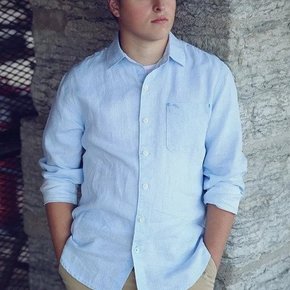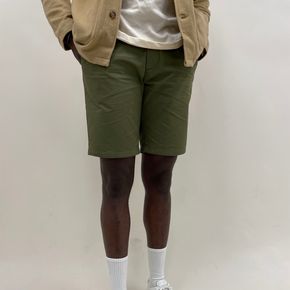RARE c. 1940 black Saltaire swing coat w/ ribbon detail
C$540
Free
Shipping
Size
Like and save for later
Add To Bundle
NOTE: Some images lightened to show detail
Vintage black swing coat with Saltaire alpaca-blend fabric
c. 1939–1941*
Fitted bodice with flared skirt that falls below the knee
Extra panels in back create the swing effect
Sleeves bellow out then taper at the wrist (a more subtle bishop's sleeve)
Narrowed shoulders so the sleeves lift a bit at the shoulders
Silk scalloped trim around collar
Buttons are plastic with fabric centers
Interior belt and loop to keep the coat in place
Alpaca blend (Saltaire made alpaca-silk blends and alpaca-cotton blends, and I feel what I think is cotton in the fabric, but it could be silk)
Lined in heavy black silk satin
Impeccable tailoring: bound buttonholes, waist reinforced with heavy cotton, hand-stitching inside cuffs, etc.
Purchased at Osborne's Ladies' Wear in Red Deer, Alberta.
Size S:
Shoulder width: 13.5" (narrowed for effect)
Back width: 17.75"
Waist: 32"
Sleeve length: 25.5"
Length from nape: 43"
*Osborne's Ladies' Wear opened in Red Deer in 1939. The coat is likely from the store's initial period in Red Deer as there is a typo on the label ("ladie's" instead of "ladies'") that was corrected in its December 1939 and later advertisements.
SEE COMMENTS FOR REMAINING INFORMATION
Shipping/Discount





camillegan
and
4 others
like this
6 Comments

madscloset2
- The shoulders are only lightly padded (as the war progressed, shoulders became sharper, more militaristic).
- The degree of hand-stitching suggests an earlier period.
- Swing coats were popular in the 1930s with ads such as "Join the Swing to National Values"
- This particular Saltaire label was in use from 1930 to 1960
Dec 23Reply

madscloset2
- The coat was manufactured using very expensive Saltaire fabric; British in origin, it suggests the time period prior to rationing in Canada (that began in 1942) when our economy was booming and Canadians were encouraged to "buy British" to aid their wartime economy.
Dec 23Reply

madscloset2
- The coat was likely manufactured in western Canada: there are no manufacturer or union labels, and while eastern Canadian clothing manufacturers were almost all unionized by the 1940s, western Canadian clothing manufacturing was not unionized until the 1950s.
- The use of hem tape also generally indicates North American manufacture.
- There are no fabric content or care labels; text-based labelling came into use in the 1950s (though there was no consistency then).
Dec 23Reply

madscloset2
Saltaire was one of most famous mill towns in the UK (and is now a World Heritage Site); it rose to fame for the mill's innovative use of alpaca wool via techniques developed by its founder, Titus Salt: by mixing the alpaca with silk, "Salt developed first a fine, glossy yarn and then the techniques and machinery to turn it into cloth. He began producing Alpaca Orleans, a cloth so fine that Queen Victoria herself kept two alpaca llamas at Windsor and sent their fleeces to Salt to be turned...
Dec 23Reply

madscloset2
into cloth. It would make Salt’s fortune." In addition to using a silk warp, Salt would later mix the alpaca on a cotton warp for a heavier fabric.
Dec 23Reply

madscloset2
This coat is museum quality. Another Saltaire coat from the same era in the same quality sold on 1st Dibs for $1050. My price takes the current economy into consideration.
Dec 26Reply
Trending Now
Find Similar Listings
































